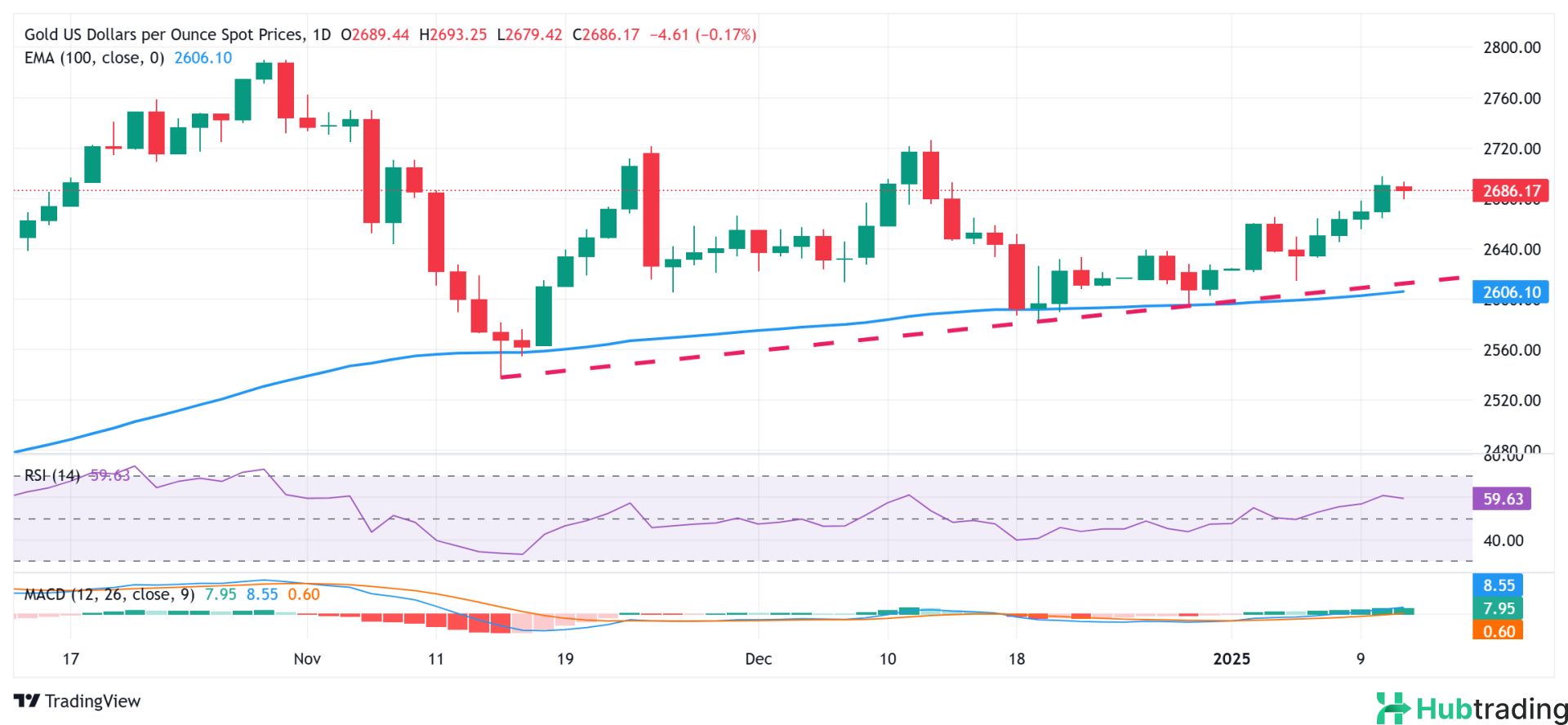- Gold prices face selling pressure at the start of the week but struggle to sustain momentum.
- Hawkish Fed outlook, higher US bond yields, and a stronger USD weigh on the metal.
- Geopolitical tensions and risk-off sentiment help limit losses for the safe-haven asset.
Gold price (XAU/USD) trades with a slight negative bias during the early European session, appearing to break a four-day winning streak that pushed it to a one-month high on Friday. The robust US Nonfarm Payrolls (NFP) report has bolstered market expectations that the Federal Reserve (Fed) will hold off on further rate cuts this month. This has kept US Treasury bond yields elevated near their highest levels in over a year and the US Dollar (USD) near a two-year high, applying downward pressure on the non-yielding yellow metal.
At the same time, hawkish Fed sentiment and ongoing geopolitical tensions dampen investor appetite for riskier assets. This risk-off mood, reflected in weaker equity markets, continues to provide some support to safe-haven Gold. As a result, it would be prudent to await strong follow-through selling before concluding that the XAU/USD rally over the past three weeks has ended or anticipating a significant corrective decline. Investors are now focused on this week's US inflation data release for additional directional cues.
Gold prices face pressure from elevated US bond yields and continued USD strength driven by hawkish Fed sentiment.
- On Friday, the US Bureau of Labor Statistics (BLS) reported a robust increase in Nonfarm Payrolls, which rose by 256,000 in December, surpassing the previous month's 212,000 and market expectations of 160,000.
- The report also revealed a surprising decline in the Unemployment Rate to 4.1% from 4.2%, while annual wage inflation, as measured by Average Hourly Earnings, eased to 3.9%.
- These figures, combined with the Federal Reserve's hawkish pivot in December, have dampened hopes for additional interest rate cuts, driving US Treasury bond yields and the US Dollar higher.
- The benchmark 10-year US Treasury yield has surged to its highest level since late 2023, while the USD Index, which measures the Greenback's performance against a basket of currencies, has climbed to a two-year high.
- Elevated bond yields and a stronger USD weigh on Gold prices early Monday, although the risk-off environment provides some support to the safe-haven metal, limiting significant losses.
Geopolitical developments also influence market sentiment:
- On Friday, the Office of Foreign Assets Control (OFAC) announced that the US and UK imposed stricter sanctions on Russia's oil sector, targeting nearly 200 vessels from the so-called shadow fleet.
- Over the weekend, Russia's Defense Ministry reported strikes on Ukrainian military airfields, personnel, and vehicles across 139 locations using air forces, drones, missiles, and artillery.
- Meanwhile, tensions continue in the Middle East, with reports of Israeli strikes in Lebanon and ongoing attacks in Gaza, despite renewed ceasefire negotiations with Hezbollah.
Gold's technical outlook favors bulls, suggesting potential dip-buying opportunities at lower levels.
From a technical standpoint, any further decline is expected to attract fresh buyers, with solid support likely near the $2,665-$2,664 zone. A decisive break below this level could expose Gold to a deeper drop toward the $2,635 region. The downward momentum may extend further to the $2,605 area, which aligns with the 100-day Exponential Moving Average (EMA) and a multi-week ascending trendline.
Conversely, bullish traders may wait for sustained strength above the $2,700 level before initiating new positions. With daily chart oscillators gaining positive momentum and remaining comfortably below overbought levels, Gold could target the $2,715 region. Further gains might see the price advancing toward the $2,730-$2,732 range and eventually testing the $2,746-$2,748 supply zone.






